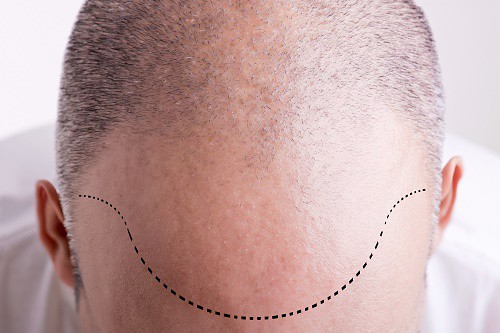 Baldness and thinning hair affect men and women and significantly reduce self-confidence. Great advances have been made over the past five years to help stave off baldness. Medications such as Propecia®, a once-a-day pill, have been shown to be much more effective than Rogaine for thinning hair on the top of the head. The Propecia studies have focused on the top of the head. Dr. Brian Maloney also recommends Propecia for those who are losing hair in the frontal area as well.
Baldness and thinning hair affect men and women and significantly reduce self-confidence. Great advances have been made over the past five years to help stave off baldness. Medications such as Propecia®, a once-a-day pill, have been shown to be much more effective than Rogaine for thinning hair on the top of the head. The Propecia studies have focused on the top of the head. Dr. Brian Maloney also recommends Propecia for those who are losing hair in the frontal area as well.
As a leading plastic surgery center, The Maloney Center for Facial Plastic Surgery offers patients several hair restoration options that result in full, healthy hair that looks natural.
View before and after photographs.
About Hair Restoration Procedures
For the treatment of thinning along the frontal hairline, a patient can choose between flaps and follicular transfer.
- Flaps: Flaps involve taking a strip of hair from the side of the head and flipping it across the front to create a new hairline. The hair density is very thick, and follicular grafting can be done in front of the flap to soften the scar if visible.
- Follicular Unit Grafting: Follicular Unit Grafting is the state-of-the-art treatment for the majority of patients. A strip of hair is removed from the side or back of the head. Under magnification, the hair is separated into single to two-hair units. These hairs are then placed into micro-incisions in the desired area.
- Thinning: Thinning on top of the head is treated with scalp reductions or grafting. The scalp reduction is performed by excising an oval of bald skin and closing the incision. As the scalp relaxes over a period of 3-6 months, another reduction can be performed. Today, this process is accelerated with the use of an extender. Before closing the incision, this simple device is inserted under the scalp and helps to pull it together so that, by the end of 4-6 weeks, the majority of the bald area is removed.
Collagen Induction Therapy
Some patients have found great success in restoring their hair by adding collagen induction therapy (microneedling) to their treatment plan. By releasing VEGF (vascular endothelial growth factor), CIT can increase follicle size. This treatment also utilizes Benev Exosomes, a biotech advancement that promotes cellular regeneration, to help stimulate hair growth. Dr. Maloney can discuss the many benefits of this treatment during a consultation.
Ethnic Hair Restoration
Patients of African American decent face unique challenges for hair restoration. Loss of hair on the top of the head can be treated medically with Rogaine or Propecia®. If the patient is considering surgical hair restoration, follicular transfer will probably provide superior results. With this technique, a strip of hair is removed, and the individual follicles are removed under magnification. This is important because the black hair follicle has a curl to it that extends under the skin. The magnification allows the technician to identify and preserve the follicles. The follicles are then placed in the desired area with micro slits. Scalp reductions can be used to remove areas of thinning on the top of the head. Follicular transfer techniques can also be used to help restore fullness to the top of the head. Post-operatively, patients should be aware not to let astringents over-dry the naturally dry scalp area.
Candidates for Hair Restoration
The most important factor when considering hair transplant procedures is to have realistic expectations of your treatment. During your consultation appointment, Dr. Maloney will discuss your treatment options as well as the procedure and anticipated outcomes.
Benefits of Hair Restoration
Men and women often put great emphasis on having a full head of beautiful, healthy hair. Hair transplant treatments at The Maloney Center for Facial Plastic Surgery restore the hair that you have lost, helping you to feel better about yourself.

